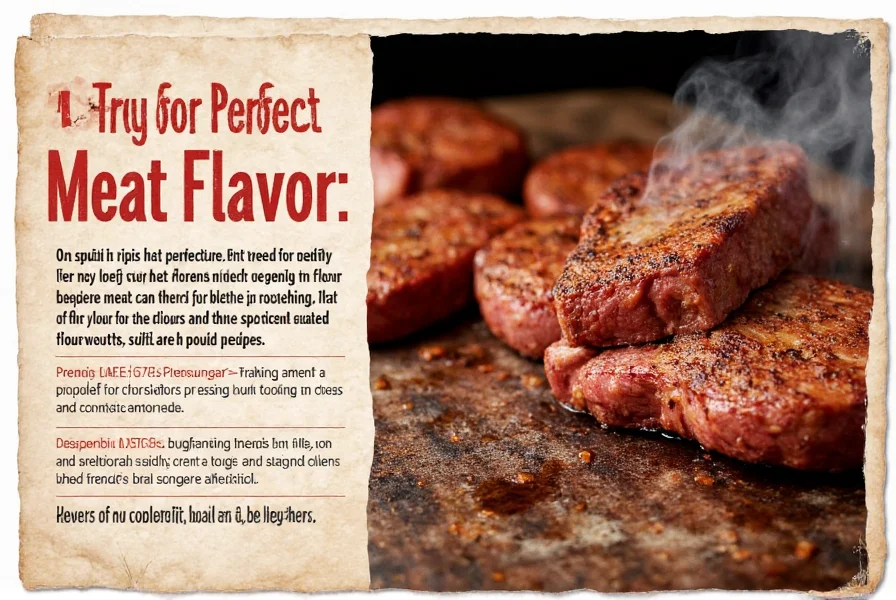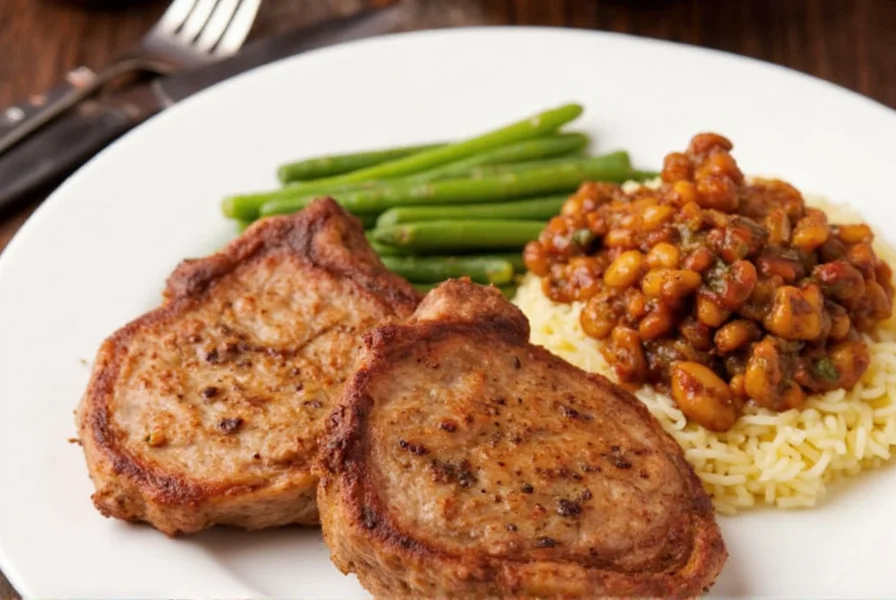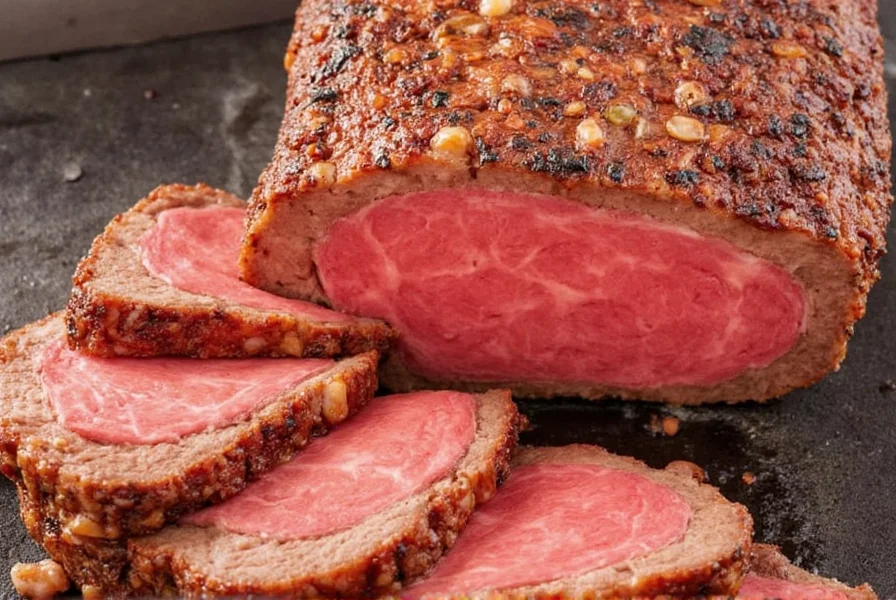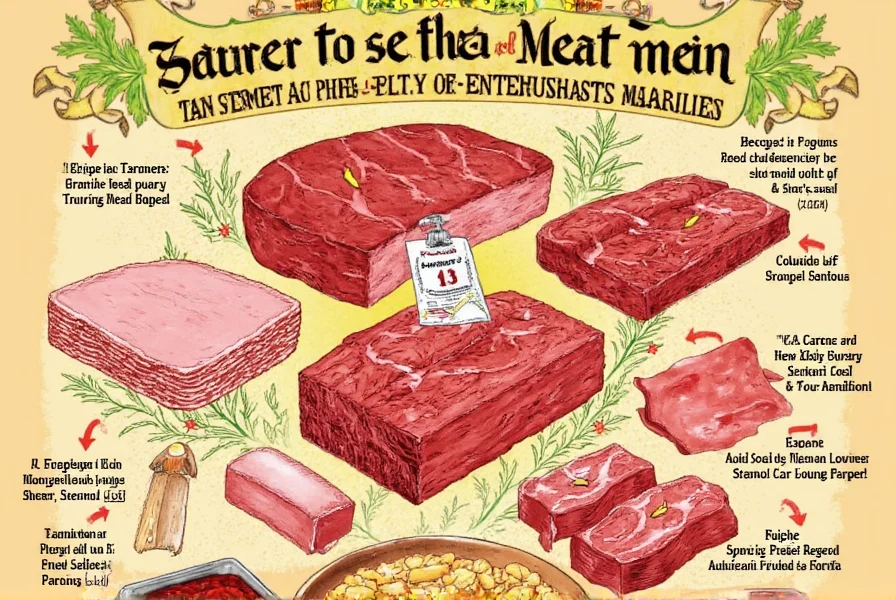Table of Contents
Understanding Meat Flavor Basics
Meat flavor is created through a complex interaction of chemistry, texture, and aroma. The most effective way to enhance meat flavor involves understanding how to properly apply seasoning, manage cooking temperatures, and select complementary spices. Properly seasoned meat should have balanced flavors that complement rather than overpower the natural taste of the meat itself.
Key factors affecting meat flavor include: meat quality and freshness, proper application of the Maillard reaction during cooking, strategic spice selection, appropriate marinating techniques, and balanced seasoning that enhances rather than overwhelms the meat's natural flavors.

The Science Behind Meat Flavor
Meat flavor development involves several key scientific processes:
The Maillard Reaction
This chemical reaction between amino acids and reducing sugars occurs when meat is exposed to high heat (typically above 285°F/140°C). It creates hundreds of flavor compounds responsible for the rich, browned flavors in seared steaks, roasted chicken, and grilled meats. The reaction is temperature-dependent and requires dry surface conditions for optimal results.
Umami Enhancement
Umami, the fifth taste sensation, is naturally present in meat but can be enhanced through strategic seasoning. Glutamates in meat interact with certain spices to create synergistic flavor effects. For example, combining meat with ingredients containing nucleotides (like mushrooms or tomatoes) can amplify umami perception by up to 8 times.
Flavor Compound Interactions
Spices contain volatile compounds that interact with meat proteins and fats. These interactions can either complement or clash with the meat's natural flavor profile. For instance, the sulfur compounds in garlic interact with meat fats to create new flavor molecules that enhance overall taste perception.

How Spices Interact with Different Meats
Understanding spice-meat compatibility is crucial for optimal flavor development. Different meats have distinct protein structures and fat compositions that interact uniquely with spices:
Beef
Beef's rich, iron-rich profile pairs well with bold spices. Black pepper enhances the meat's natural umami, while rosemary's terpenes complement beef's fatty acids. Cumin's earthy notes work particularly well with grass-fed beef. For maximum flavor penetration, apply spices 1-2 hours before cooking to allow time for absorption.
Pork
Pork's milder flavor profile benefits from sweet and aromatic spices. Cinnamon and nutmeg enhance pork's natural sweetness, while sage's thujone compounds interact with pork fat to create complex flavor notes. Apple-based seasonings work particularly well with pork due to their complementary fruit acids.
Chicken
Chicken's versatile nature allows for diverse spice pairings. Paprika's capsaicinoids interact with chicken fat to create rich, smoky notes, while thyme's thymol compounds complement chicken's natural flavor without overpowering it. For skin-on chicken, dry rubs applied 4-6 hours before cooking yield the best results.
Lamb
Lamb's distinct gamey flavor pairs beautifully with Middle Eastern spices. Cumin's caraway-like notes balance lamb's richness, while mint's menthol creates refreshing contrast. Coriander's citrus notes help cut through lamb's fat content, creating a more balanced flavor profile.

Practical Techniques for Enhancing Meat Flavor
1. Surface Preparation
Pat meat dry with paper towels before seasoning. Moisture prevents proper browning and inhibits the Maillard reaction. A dry surface allows spices to adhere better and creates optimal conditions for flavor development during cooking.
2. Proper Salting Techniques
Salt is the most important flavor enhancer for meat. For best results, season meat with salt 45-60 minutes before cooking (or up to 24 hours for larger cuts). This allows salt to penetrate the meat, enhancing flavor throughout rather than just on the surface. Use 1/2 teaspoon of kosher salt per pound of meat as a starting point.
3. Strategic Spice Application
Apply spices at different stages of cooking for maximum flavor impact. Base spices (like garlic powder, onion powder, black pepper) should be applied before cooking to develop flavor during the cooking process. Delicate spices (like fresh herbs, citrus zest) should be added near the end of cooking to preserve their volatile compounds.
4. Temperature Management
Control cooking temperature to optimize flavor development. For searing, use high heat (400-450°F/200-230°C) to trigger the Maillard reaction. For slow-cooked meats, maintain lower temperatures (225-275°F/110-135°C) to allow gradual flavor development without burning spices.
5. Resting Period
Allow meat to rest for 5-10 minutes after cooking (longer for larger cuts). This allows juices to redistribute throughout the meat, resulting in more flavorful bites. Cutting into meat immediately causes juices to escape, diminishing flavor and moisture.

Common Mistakes That Diminish Meat Flavor
Even with good spices, these common errors can ruin meat flavor:
Over-Spicing
Using too many spices or excessive quantities overwhelms the meat's natural flavor. A good rule of thumb: no single spice should dominate the flavor profile. Start with small quantities and adjust to taste.
Using Expired Spices
Spices lose potency over time. Whole spices maintain freshness for 2-3 years, while ground spices last 6-12 months. Test spice freshness by rubbing a small amount between your fingers; if you don't smell a strong aroma, it's time to replace them.
Incorrect Marinating Times
Acidic marinades (with vinegar, citrus, wine) can break down meat proteins if left too long. Delicate meats like fish should marinate for 15-30 minutes, chicken for 2-4 hours, and tougher cuts like beef for 4-12 hours. Beyond these times, texture deteriorates without significant flavor benefit.
Adding Spices at the Wrong Time
Delicate herbs and spices added too early lose their volatile compounds. Fresh herbs should be added in the last 5-10 minutes of cooking, while ground spices benefit from being added earlier to develop flavor during cooking.
Ignoring Salt's Role
Salt is the most important flavor enhancer. Many cooks under-season meat because they're afraid of making it too salty. Properly salted meat actually tastes less salty but more flavorful overall due to salt's ability to enhance other flavors.
How to Choose Quality Spices
| Spice Type | Key Characteristics | Best Use Cases | Storage Tips |
|---|---|---|---|
| Black Pepper | Whole peppercorns retain flavor longer than pre-ground. Look for uniform color and strong aroma. | Universal application for all meats. Best added before cooking for depth, or as finishing spice for sharpness. | Store in airtight container away from light. Grind fresh just before use for maximum flavor. |
| Paprika | Choose vibrant red color and strong aroma. Smoked paprika should have distinct wood-smoke notes. | Great for grilled meats, stews, and sausages. Sweet paprika for mild flavor, smoked for depth, hot for spice. | Store in cool, dark place. Refrigeration extends freshness. Check for clumping which indicates moisture exposure. |
| Cumin | Whole cumin seeds should have strong, distinctive aroma. Ground cumin should be fragrant but not dusty. | Perfect for Mexican, Middle Eastern, and Indian cuisines. Works well with beef, lamb, and pork. | Store in airtight container. Whole seeds last 3-4 years, ground cumin 1-2 years. |
| Garlic Powder | Should have strong garlic aroma without musty notes. Avoid powders with added anti-caking agents if possible. | Essential for rubs, marinades, and sauces. Best for meats where fresh garlic would burn during cooking. | Store in cool, dry place. Avoid humidity which causes clumping and flavor loss. |
| Oregano | Look for vibrant green color and strong herbal aroma. Mediterranean oregano has more complex flavor than Mexican varieties. | Perfect for chicken, lamb, and tomato-based meat dishes. Best added toward the end of cooking. | Store in airtight container away from light. Dried oregano loses potency after 6-12 months. |
Frequently Asked Questions About Meat Flavor
What are the 5 most important factors that affect meat flavor?
The five most important factors are: 1) Meat quality and freshness (including proper aging), 2) Proper application of the Maillard reaction during cooking, 3) Strategic use of spices that complement the meat's natural profile, 4) Appropriate salting technique and timing, and 5) Balanced seasoning that enhances rather than overwhelms the meat's natural flavors. These factors work together to create a complex, satisfying flavor experience.
Why does my meat often taste bland even when I use spices?
Meat tastes bland for several scientific reasons: 1) Insufficient salt, which is the primary flavor enhancer, 2) Spices that are expired or improperly stored (losing volatile compounds), 3) Moisture on the meat surface preventing proper browning, 4) Spices added at the wrong cooking stage (delicate herbs added too early), and 5) Overcooking which destroys flavor compounds. The solution is proper salting 45-60 minutes before cooking, using fresh spices, patting meat dry before seasoning, and adding delicate herbs near the end of cooking.
Which spices work best with different types of meat?
Different meats have unique protein structures and fat compositions that interact with spices differently: Beef pairs well with bold spices like black pepper, rosemary, and cumin due to its rich umami profile. Pork complements sweeter spices like sage, nutmeg, and apple-based seasonings. Chicken works with versatile herbs like thyme, oregano, and paprika that enhance without overpowering. Lamb pairs beautifully with mint, cumin, and coriander which balance its distinctive gamey flavor. Fish benefits from delicate herbs like dill, lemon pepper, and tarragon that complement its mild profile.
How can I make my grilled meat taste more flavorful?
For maximum grilled meat flavor: 1) Pat meat dry before seasoning for better sear, 2) Apply salt 45-60 minutes before grilling to allow penetration, 3) Use a dry rub with spices that complement your meat type, 4) Preheat grill to 450-500°F (230-260°C) for proper Maillard reaction, 5) Use a two-zone fire for temperature control, 6) Add wood chips that complement your spice profile (like hickory for beef, apple for pork), and 7) Let meat rest for 5-10 minutes after grilling to redistribute juices. This combination of proper preparation, temperature control, and resting creates restaurant-quality flavor at home.
Does marinating actually improve meat flavor, or is it just a myth?
Marinating does improve meat flavor, but with important scientific caveats. Acidic marinades (vinegar, citrus) primarily affect the surface layer and can actually toughen meat if left too long. Oil-based marinades with spices and herbs penetrate better. Salt is the key component for flavor penetration - it helps carry flavors deeper into the meat. For maximum flavor impact, marinate for 2-24 hours depending on meat type (shorter for delicate meats, longer for tougher cuts), and always include salt which acts as a flavor carrier. For most meats, a simple salt-based dry rub is more effective than lengthy acidic marinades.
What's the secret to getting restaurant-quality meat flavor at home?
The restaurant secret is threefold: 1) Proper temperature control (getting the pan or grill hot enough for proper searing), 2) Strategic use of finishing fats (like herb-infused butter added at the end of cooking), and 3) Layering flavors through multiple stages of seasoning (before, during, and after cooking). Home cooks can replicate this by investing in a good meat thermometer, making compound butters with fresh herbs, and understanding when to apply different seasonings throughout the cooking process. The most important factor is mastering the Maillard reaction through proper surface drying and temperature control.
Conclusion
Mastering meat flavor is both a science and an art that requires understanding the chemical interactions between meat and spices. The most effective approach involves proper surface preparation, strategic salting, temperature control, and careful spice selection based on meat type. By avoiding common mistakes like over-spicing and using expired spices, you can significantly enhance your meat dishes.
Remember that salt is the most important flavor enhancer, and proper timing of spice application makes all the difference. Whether you're grilling, roasting, or braising, these science-backed techniques will help you create consistently flavorful meat dishes that impress every time.
With practice and attention to these fundamental principles, you'll transform simple meat dishes into culinary masterpieces that showcase the true potential of well-seasoned meat.











 浙公网安备
33010002000092号
浙公网安备
33010002000092号 浙B2-20120091-4
浙B2-20120091-4